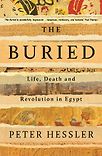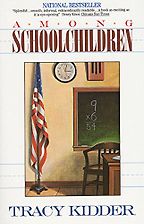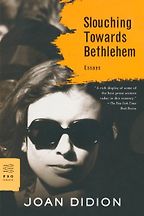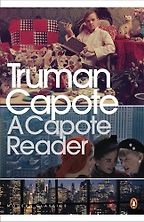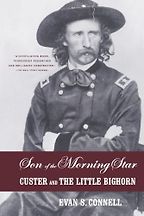Narrative or literary nonfiction is now a pretty well-established genre. What’s your understanding of it and its scope?
It’s taking a true story and making it as vivid as possible – not just doing conventional newspaper journalism, which tries to convey information in a very efficient way. With literary nonfiction, you’re trying to write at a high level. It has got more attention in the last 50 years, but it’s not a new thing. People have always written nonfiction stories in vivid and innovative ways. But I think it has found new respect and attention, partly because of the New Journalism which developed in the sixties and which Tom Wolfe wrote about.
What can it do that conventional journalism can’t?
It starts at the level of research. This form of writing is connected to immersion reporting, where you spend intense amounts of time in a community or with a person. Then when you write it up, you use all the tools of a novelist, working within the framework of your material. You are trying to be artful about it – to have a structure that’s engaging and brings the reader in.
Newspaper writers are limited because they can’t write at length, and usually they aren’t allowed to use the first-person voice. But in an 8000-word magazine piece, or in a book, there’s a lot more that you can do. And that’s what the form is all about.
Your collection, Strange Stones, pulls together your longer pieces, many for the New Yorker, and you’ve written three books on China. How did you come to the genre yourself?
I wanted to be a fiction writer – a novelist or short story writer. From the time I was in high school, and an English teacher encouraged me, I was determined to become a writer. But my conception of literature, growing up in Columbia Missouri, was that writers wrote novels and short stories. I didn’t grow up with the New Yorker or the Atlantic in my house. So when I went to college [at Princeton] I wrote only fiction. I didn’t write one word in the campus newspaper or any other student publication – that’s how little interest I had in journalism.
Then as a junior I signed up for a literary nonfiction course taught by John McPhee, because I had read it was a good course to take if you wanted to write. That changed my perception. After that course, I began to do some freelance writing, longform journalism, and I started to get paid for it. At the same time, I was sending out my short stories to reviews, and I was getting rejected. I had some ability as a writer, but my fiction wasn’t that good. I tended to be a little too serious in my fiction – maybe I was intimidated by it. But when I wrote nonfiction, I was looser and more natural. And I realised I could publish and make a little money from it, unlike my experience with fiction. So I gravitated in that direction.
In the end it was a natural fit. I really enjoy the research. Being a fiction writer, creating things out of whole cloth, you’re going to spend a lot of time by yourself. It can be pretty isolating. I realised that I liked the routines of reporting. I liked getting out, learning about things, and I liked living in interesting places like China and Egypt – and I realised that writing nonfiction could get me there. People sometimes ask me if I want to go back and write fiction. I have zero interest in it now. I feel like this is what I’m supposed to be doing.
Joseph Mitchell, the old New Yorker hand, said he preferred nonfiction because it fixed the problem of having to find a story.
Certainly. John McPhee has said he thinks fiction is harder, because you just sit there staring at a blank page. But nonfiction is also hard because you’ve got to find this stuff, and you spend hours and hours in some Chinese factory that’s 115 degrees [fahrenheit], trying to untangle various dialects. But I like the challenge. And it’s true that once you’ve got the material, it’s hard to be really stuck. The material is staring you in the face after you’ve spent all those hours with these people. Write something!
John McPhee clearly had a big influence on your writing. Can you tell us a little more about his craft, and this book which is your first choice?
John has written more than thirty books, about incredibly esoteric subjects. There was a time when he was writing a book a year, as well as reporting for the New Yorker. He wrote a book about oranges. He wrote a book about a guy making canoes out of birch bark in the traditional manner of Native Americans. He wrote a book about a basketball player. He wrote a book about a tennis match. It’s an amazing range of things, but there’s a unifying voice and a unifying attention to detail and to structure.
In my opinion Coming into the Country, about Alaska, is his best book. It describes the natural history and scenery in incredible detail, but he’s also writing about a very unusual part of America, and how it was becoming what it is now. He was there at an interesting moment in the seventies, when they were trying to find a new capital for the state. There were a lot of decisions to be made about resource management, and he illuminates those issues as well as describing how communities and individuals function in this incredibly rugged place. It’s a wonderful book.
What are some of the literary devices he uses?
When I took his course on nonfiction writing, we looked at sections of Coming into the Country, and some of the decisions that McPhee made as a writer. For example, there’s a set piece, maybe a few pages long, about seeing a bear. It’s an incredibly vivid piece of writing, and that was the first time someone showed me this way of putting material into a story. You step outside of your normal voice and take a short detour, focusing on this other subject, whether it’s a bear or Chinese cigarettes – which is a set piece of my own in Country Driving.
There are also some lessons about structure in Coming into the Country that are wonderful. Read the first section of the book and look at what McPhee does with the tenses. There’s a shift between the past and the present tense, and it plays a key role in the structure. I put this book on my list because I think it can teach a writer a lot about structure and control of material. He has all of these tools at his disposal. You notice from the beginning that he’s making decisions, that nothing is just being thrown out onto the page. It’s all been thought out; there’s a purpose to everything.
Tracy Kidder has also acknowledged his debt to John McPhee. Tell us about Among Schoolchildren.
Tracy Kidder spent an academic year in the class of a fifth grade teacher in Holyoke, Massachusetts – a pretty working class, poor neighbourhood. I chose Kidder for this list because of the intensity of his observation, and what this book tells us about research as part of literary nonfiction. Sometimes we focus so much on the writing that we forget about that, and Kidder does it amazingly well. It’s intensely and faithfully observed. It’s also an interesting book because he doesn’t use the first person. He made the decision to keep himself out of it, because he wanted to really focus on the relationship between the kids and their teacher.
You can only really understand something through being immersed in it.
And that allows you to write with compassion. Kidder writes about a troubled kid in the class, the way he affects his peers and his teacher, and he captures the teacher with great vividness. There’s a very moving part of the book where the teacher is talking how she was inspired by one of her own teachers, and wants to go visit her, but never does. And you realise that’s what being a teacher is – you’re inspiring young people, putting incredible energy into these fifth graders, but they’re going to move on and have so many other experiences that by the time they really develop into individuals, you’ll be long gone from their lives.
It’s a very generous act, teaching. If you look at the first review of the book on Amazon, it’s by someone who went to that same school in Holyoke, and had the same teacher. The reviewer says that it’s a great book, totally accurate – and then she notes that now she’s a teacher herself.
One thing running through a reader’s mind when they pick up a nonfiction book like this is, is it really true? How can I trust that this all happened exactly so?
You can’t make anything up with this genre. It has to be totally accurate to the best of your abilities. The only exception I make is where I change names for political reasons, or in River Town I put one person in a different part of the town – but I explained in the author’s note that it was because of political sensitivities. I changed the name of one character in Oracle Bones, but I explained why. If you’re changing anything for such reasons, you have to tell the reader. But otherwise, it has to be accurate, and I think that’s non-negotiable. The story is never going to be as dramatic or perfect as a novel is going to be. But you work with what you have. That’s your pact with the reader.
There is the kind of writer who says the story comes first. Kapuscinski, Theroux – they all fudge.
Paul Theroux wrote fictionalised memoirs, but he tells you at the beginning of the book that it’s fictionalised. I think it’s fine if you let the reader know. I really like those Theroux books.
I have a problem with some of Kapuscinski’s work, which portrays itself as straight reportage. The Emperor is full of fabrications about Ethiopia, inaccuracies about the language and the court life of Haile Selassie. It has been said that it’s supposed to be a parable about Communist politics in Poland. So why not write a book about Poland, or a novel? Ethiopian culture and history deserve to be written about with accuracy; it’s not just an empty space where we can go to tell imaginative stories that are really about ourselves.
And it’s not necessary to make things up or change them. Your material is there, and that’s the challenge of the genre – to maintain accuracy while trying to make the thing artful. The attention to accuracy doesn’t mean that you have to include every little detail or slavishly report each incident in exactly the same order in which it was witnessed. You can have flashbacks or shifts in time. But you can’t wilfully change the facts. You can’t create composite characters, or take somebody from X and put him in Y, simply because you think it makes for a better story. You can’t say that this thing happened on Monday when it actually happened on Wednesday.
There are people who say everything we do is subjective and there’s no real truth anyway – the postmodern thing. I don’t really buy that. Of course, it’s important to remember that people see things differently, and they make mistakes. But that’s different from making things up. And when you take this postmodern idea to the extreme it can justify all kinds of dishonesty.
Readers know that this kind of work has a degree of subjectivity. That’s one of the reasons I like the first person voice. I like to remind people that there is a bit of distance between the people I write about and me, a foreigner – especially when I’m writing about places like China and Egypt. There’s a gap between us, and the way we interact is going to be coloured by it. That gap also reveals things – when I describe how a Chinese farmer responds to me as a foreigner, we learn something about his character and worldview. I feel I need to describe that to some degree. The reader understands that it’s subjective – everything is being seen through my filter, and my presence may be affecting the story.
Let’s go back to the swinging sixties of nonfiction, with New Journalism and Joan Didion’s Slouching towards Bethlehem.
This is a collection of essays by Didion, based in California and covering the second half of the sixties. I like Didion for her writing style and her control over her material, but also for the way in which she captures a historical moment. In this book she really conveys the sense of significant cultural change that America was undergoing at that time. If you’re writing about China or Egypt right now, you’re also aware of this feeling. These are times that have a certain weight, a significance, that isn’t common. As a writer you want to understand this moment and capture its resonance.
She’s a very powerful stylist, her prose zips you along.
There’s a mesmeric quality to her writing. She uses a lot of short sentences; there’s a strong sense of rhythm. It’s similar to some writing patterns of McPhee, and both writers are descendents of Hemingway. Hemingway’s fiction has a strong connection to journalism and to nonfiction – it has something to do with the way Hemingway stories are closely observed, and the types of narrators that he uses. I think there’s a reason why some of these nonfiction writers picked up his rhythms and his sense of language.
One important character in this book is Joan Didion. She uses the first person very liberally. Can you tell us more about what you think the role of the “I” is in this kind of writing?
Joan Didion has a really strong first person voice. She’s having breakdowns at various points. But that’s part of her story. She’s part of this craziness of the sixties, so it’s appropriate. But using the first person is not all or nothing. There are degrees of it. You can make your voice really strong, or you can step back, and you can shift the intensity and presence of your voice throughout a book. McPhee pretty much always uses the first person, but he rarely tells a lot about himself. He often includes long sections that don’t use the “I” at all.
I believe that the first person is a tool which the writer should think about seriously. In my opinion it’s usually something that you want to use, because it helps to orient the reader. It reminds the reader of this subjectivity, of the fact that you are the filter. And I think it’s critical in a place like China or Egypt, where there is always a bit of tension or distance. I observe as closely as I can, I talk and I listen, I learn the local language – but I’m not going to step inside a character’s head.
Your fourth pick, A Capote Reader, is a British anthology that collects some of his short stories, travel sketches, reportage, essays and a couple of novellas. What does Capote mean to you?
I bought that book when I was a student at Oxford, and I still have it here with me in Cairo. I like the range of the collection, and I find it a useful thing to keep with me and refer to. One big hedge with Capote’s nonfiction is that he sometimes made things up. That was more accepted in his day, whereas today it isn’t. When you read Capote, you need to be aware of that. In Cold Blood ends with a vivid scene of a young girl who was a friend of the Clutter’s daughter, visiting the cemetery where her friend is buried. That’s totally made up – it didn’t happen.
But I still find his language beautiful. There’s a profile of Marlon Brando in this collection which is a classic. Brando later said, I wish I hadn’t talked to that guy, but everything he wrote is true. His essay about Marilyn Monroe is very short and touching. And there’s a beautiful piece called “The Muses Are Heard” where he follows an opera troupe travelling in the Soviet Union on an early cultural exchange. So I still love to read him for his poetic sense.
He was also known as a socialite around town – a personality in the cult of the writer.
That stuff has never appealed to me. It’s a distraction, and I think it weakened Capote’s writing. It certainly drove him to drugs and alcohol, and shortened his life. I don’t think any of that is part of the essence of the writer on the page. You don’t need to be a public figure or attract attention to yourself. It’s probably healthier if you don’t. I’m not a big fan of Twitter or social media either. I feel you become too aware of being a Writer with a capital W. It’s better just to do the work.
In Cold Blood isn’t in this collection, but we should give it its dues as a “nonfiction novel”, to use Capote’s phrase.
That was groundbreaking in Capote’s mind, but people had done it before. Hiroshima by John Hersey reads as a novel, too. So none of this stuff is new. Other people had written true stories that are vivid and put you there in the way a novel would.
One of the things I love about that book is the way in which it describes small-town America, not with any condescension or exoticism. Capote grew up in a small town in the south, and even though he was gay and became this big celebrity in New York, there was a part of him that was still able to connect with the people in small towns, in a way that many people from the coast couldn’t. He really shows the complexity of that community and that family in Kansas. It’s so well observed.
Finally, tell us about Son of the Morning Star, which is a rendering of General Custer’s Last Stand.
This is a historical book, and I chose it for the way Evan Connell handles historical material. With the other writers, I’ve talked about structure and voice and language, but I add Connell to the list because of the way he handles archival material, which is another thing you can do as a narrative nonfiction writer. He writes about Custer and the Battle of Little Bighorn, something deeply entrenched into the American psyche. It’s unique, and a masterful book.
The structure of it is just unbelievable. Different voices and perspectives are braided throughout the book. You have Custer’s perspective, the soldiers’ perspective, and the Indian’s perspective – as well as background about the cultures that they came from. And when you read the book, you realise that history is the sum of all these perspectives. He’s not telling us, This is what happened. He’s showing us what different people believe happened.
To what extent does he go into the mind of General Custer? How far can a nonfiction writer understand someone else’s perspective?
He’s quoting from letters and people who describe the events. So he’s not going into Custer’s head, as if seeing things through his eyes. He’s not fabricating things. That’s not necessary for vivid writing, and this book proves it. He’s able to take all these materials and give us all these perspectives. He spent four years on the research alone.
All the books on your list are by American writers. Do you think contemporary literary nonfiction is an American form?
One of reasons why it has developed in the US is not that Americans have any special genius, it’s just that there’s a big market. There are magazines like the New Yorker, the Atlantic and Harper’s, where they can support people doing this kind of research and writing, and there’s also a market for books. The market is a huge factor. Maybe living in China made me an economic determinist, but I think it has a big effect if you can support yourself by writing this kind of nonfiction. So I believe it’s a stronger form in America because of those reasons. England is too small, and Europe is broken up by different languages.
In fiction, everything is true within the universe of that creation. But in narrative nonfiction, how close can a writer really get to depicting things as they really are? Or is there always a gap?
There’s always a gap. That’s inevitable. But it’s not useful to obsess about it. I feel like you can be incredibly accurate, which has always been my goal. You can bring these places to life, and you can illuminate worlds that otherwise would be lost. Because Tracy Kidder wrote about that fifth grade school teacher, there are thousands of people who know about this teacher and what she did. If he hadn’t written that book, she wouldn’t exist in a public way.
When I look back at [my first book] River Town, as a writer there are a lot of things that I would probably do differently now, and there are some small mistakes that were made unintentionally. But I feel like it’s accurate to what that moment in that place felt like. You have to have faith that you can tell it like it is, and that it will come together in the end.
Five Books aims to keep its book recommendations and interviews up to date. If you are the interviewee and would like to update your choice of books (or even just what you say about them) please email us at [email protected]
Five Books interviews are expensive to produce. If you've enjoyed this interview, please support us by donating a small amount.

